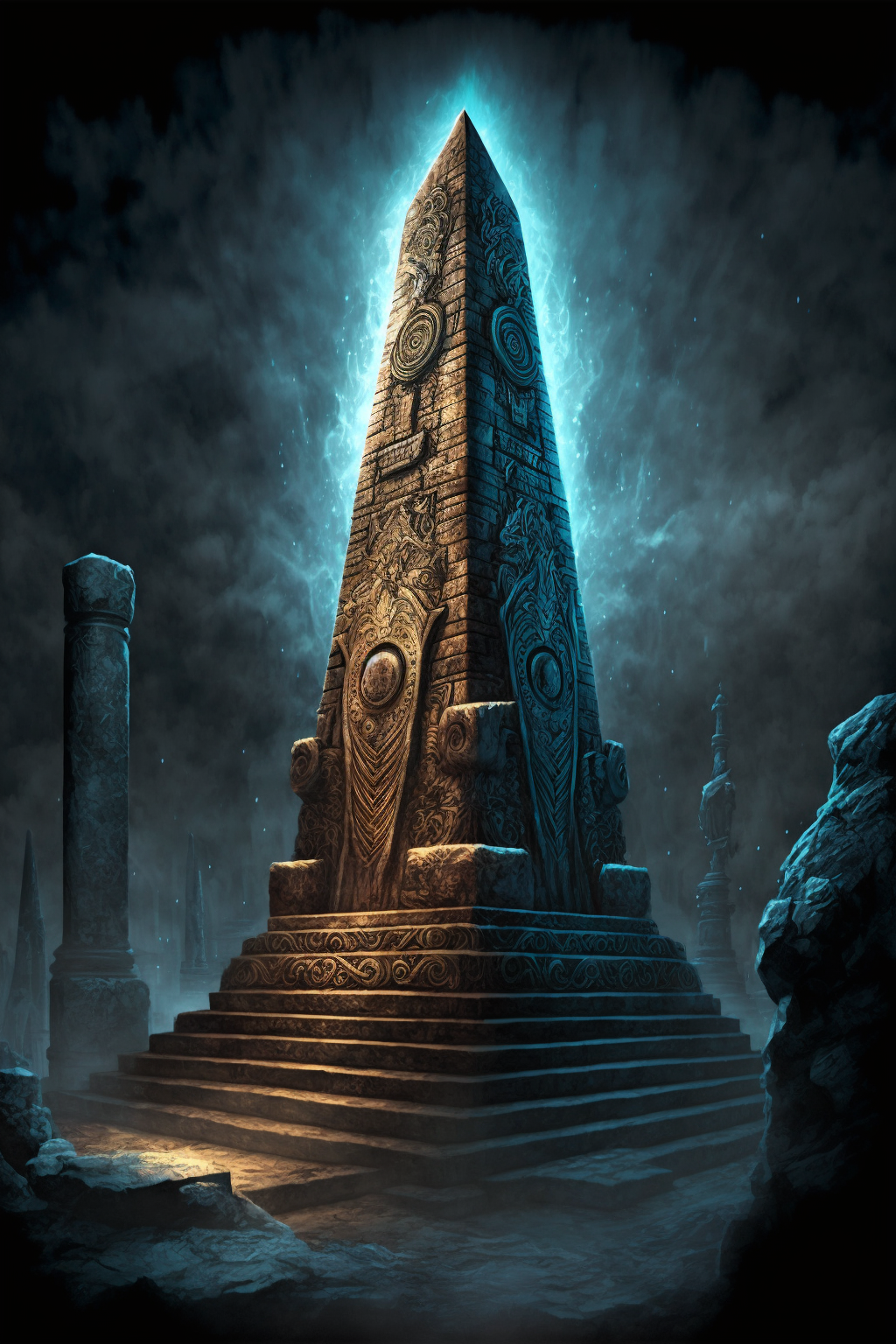Guiding Spire: Inner Sanctum
The door into the inner sanctum leads to another hallway that loops around, presumably to the other door of the inner sanctum opposite of the statue of Ades. The smell is salty and of stale death. There’s no lights within the inner sanctum.
Outer 9 rooms
Each of these rooms looks like they are part of the preparation process for the deceased. Carved symbols on the doors identify their purpose. Per-nefer, Wabet, Iqdou, [carpenter]; these symbols are recognizable now for the process hasn’t changed.Per-nefer (House of mummification) (rooms 1, 8 & 9)
These rooms were the first part of the mummification process. A stone table resides in the center of the room where the body was opened to remove the internal organs and brain. a few broken canopic jars are scattered on the floor. A beaten copper plate and surgical bronze tools wait neatly on the table for the next burial. Containers with a little white powder (Natron) sit at the foot of the table with cracked wooden bowls to receive and prepare organs. Like out by the benches, stacks of prepared bodies were left in this room. A noted difference is the preparation was done with more patience. It may be that the poor were left at the benches, while these were more upscale citizens, though who would have known in the chaos? Regardless someone took care of these dozen bodies and even organized their tools before leaving. The rest of the mummification process can be assumed to be done outside beyond the city limits before returning for purification.Per-nefer (House of mummification) (rooms 2)
Like the other Per-nefer rooms. There is a table, but the tools are nowhere to be found. Lots of broken canopic jars amidst the dozen bodies thrown in here and covered with white powder (Natron). None of these bodies were prepared or in a state to be prepared as they are wearing normal clothes. The assumption is that Gaffe Sherpses’s army was overwhelmed with burial by the end, and/or these were last minute burials that someone didn’t take care of. The opening of the door triggers them to rise.Per-nefer Zombies
These bodies have not been prepared but have still mummified due to the natron and dry air, their stained, tattered clothing are indistinguishable from their dried entrails.Wabet (House of Purification)
These rooms have a large tub for washing the deceased and a table to sew up openings. Several large jars and wicker baskets line the walls. There is still strong smell of incense that have permeated the walls over the years that blocks out the other smell of the inner sanctum. The jars only have a thin layer of resin still in the bottom, and the baskets have a few snippets of linen. In 5.13C there is a bronze pin in the shape of bull horns and in the middle is a small ruby. It’s a small symbol of Hathor. It’s unusual as normally a symbol of Ades would be added (As current tradition). Why should another god’s symbol be added should be asked. They should also remember that so far, there are no holy symbols included with any of the bodies, most likely to deal with the large volume. In 5.11C one of the baskets has hidden away 3 small glass perfume bottles. They look still intact.Iqdou (House of Clay)
These rooms contain the tools of a potter. Potter’s wheel, woven baskets of dry clay, and cups containing remnants of colored pigments are left at various tables and shelves. No finished products are left in here. The walls and ceiling however are covered in beautiful mural of life in Wait. The different artists have blended their styles in portraying things such as people, buildings, animals. Some Ambitious artist painted the spiral symbol of Ades on the ceiling. The great spiral is represented as a river with miniature of ships and fantastical beasts within it. Careful examination of all the murals can spot Khemtian gods (people with heads of animals). A woman with a crown the same as the bronze pin can be found in the mural. Like the other rooms, there is a stack of prepared bodies left neatly here. The tools are worn, but can be reused. Adzes (House of Carpenters) These rooms contain the tools of a carpenter. The axe, saw, vice, adze, drill, lathe, hammer and chisel, rule and set-square, sanding stone, glue and plaster all still reside here on shelves and tables. There are also bits of scrap wood. These rooms apparently did not see service after the plague of madness and the tools have been left as the artists left them. Carved into the walls and a few tools in demotic, are names of the artists working here or who owned the tools. There are no works stored here. Either they were taken, or the artists worked elsewhere. Like the other rooms, there is a stack of prepared bodies left neatly here. The tools are worn, but can be reused. Storage This room is surprisingly empty of tables or materials that would indicate what the room was used for. It is currently filled with twice as many bodies as the other rooms. 5.1C Per-nefer (House of mummification) 5.2C Per-nefer (House of mummification) 5.3C Iqdou (House of Clay) 5.4C Iqdou (House of Clay) 5.5C Storage. 5.6C (House of Carpenters) 5.7C (House of Carpenters) 5.8C Per-nefer (House of mummification) 5.9C Per-nefer (House of mummification) Inner 4 rooms 5.10C Wabet (House of Purification) 5.11C Wabet (House of Purification) 5.12C Wabet (House of Purification) 5.13C Wabet (House of Purification)
Type
Room, Religious, Sanctuary



Comments